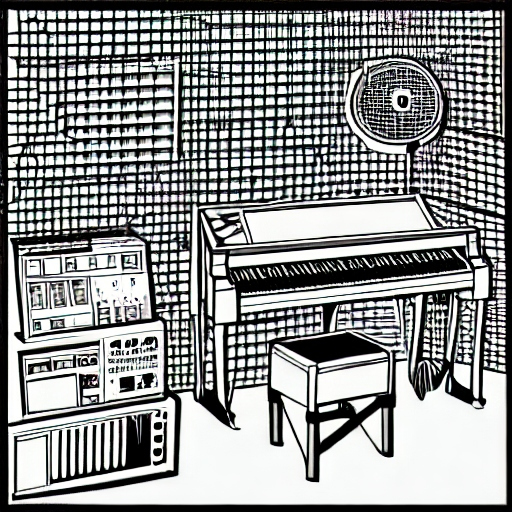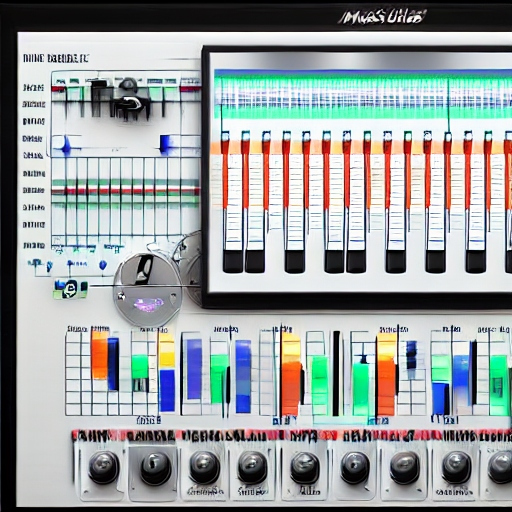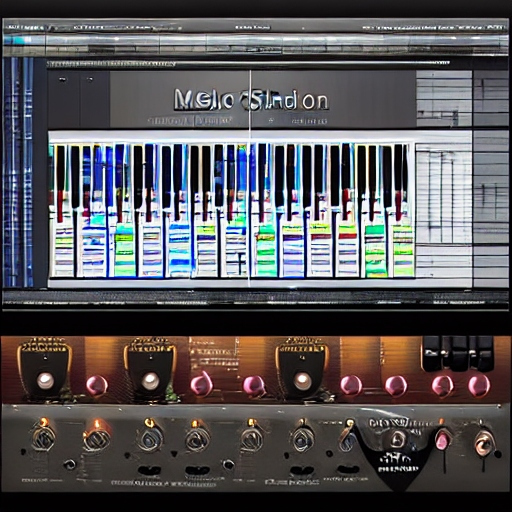
Why Chosen Masters is the Perfect Choice for Audio Mastering
Chosen Masters is the perfect choice for anyone looking to achieve professional-quality audio mastering without breaking the bank. The cloud-based platform is incredibly intuitive, and even those with little to no experience in audio mastering can quickly learn to navigate its tools and features. Chosen Masters offers a range of features, including mastering tools, limiting, EQ, and more, to help you achieve your desired sound.
Ease of Use
Chosen Masters' cloud-based platform is intuitive and user-friendly, even for those with little experience in audio mastering. The app makes it easy to master different types of audio files while achieving professional-quality results. The tools and features are easy to navigate, allowing you to customize your sound without the need for expensive equipment or studio time.
Affordability
Chosen Masters is an excellent option for those who want to achieve a professional sound without breaking the bank. The app offers a range of features, including mastering tools, limiting, EQ, and more, that come at a low cost. The affordability of Chosen Masters makes it accessible to producers and musicians of all levels, helping them achieve high-quality audio mastering results.
Customization Options
Chosen Masters allows for a wide range of customization options, tailoring audio mastering to specific needs. The app offers a range of features that help you create different sound effects or styles. Whether you are looking to create a warm and rich sound or a crisp and modern one, Chosen Masters has the tools you need to achieve your desired effect.
Support for Multiple Audio Formats
Chosen Masters supports different audio formats, making it a versatile option for producers and musicians of all genres. Specific audio formats, such as WAV, MP3, and OGG, are supported. This flexibility allows you to master a variety of different audio files, ensuring that your music sounds professional and polished, regardless of the format.
Cloud-Based Platform
Chosen Masters is a real-time online platform, which means you can access your audio files and mastering tools from anywhere in the world, as long as you have an internet connection. This feature is advantageous for those who are always on the go or need to collaborate with other musicians or producers in different locations. The cloud-based platform also ensures that your files are always secure and backed up.

The Ultimate Guide to Audio Production Tools for Audio Mastering Engineers
At Chosen Masters, we understand the importance of producing high-quality masters quickly and easily. That's why we've created an online mastering tool that provides polished and professional results every time. However, we also recognize the value of learning about the wide range of mastering tools and concepts available. By providing access to this knowledge, we aim to help our clients achieve the best possible sound for their music.
Audio mastering is an important part of music production. It is the final step in the song creation process, where the music is polished and made ready for public ears. Mastering engineers use a variety of tools to achieve the best possible sound quality. In this article, we will discuss the different audio production tools that an audio mastering engineer would use in their audio mastering process.

1. Audio Editing Software & Digital Audio Workstations
Audio editing software is a critical tool for mastering engineers. It allows them to edit, manipulate, and clean up the audio files before the mastering process. Popular audio editing software tools include Adobe Audition, Pro Tools, and Logic Pro X.
Digital Audio Workstations (DAWs) are software applications used for recording, editing, and producing audio files. They are a vital tool for mastering engineers as they allow them to control and manipulate every aspect of the audio file. Some of the popular DAWs include Ableton Live, FL Studio, and Cubase.
2. Equalizers
Equalizers are used in the mastering process to adjust the balance of frequencies in the audio track. They allow the engineer to boost or cut specific frequencies, making the audio sound clearer and more balanced. Popular equalizers used by mastering engineers include FabFilter Pro-Q 3, Waves EQ, and Sonnox Oxford EQ.
3. Compressors
Compressors are used to reduce the dynamic range of an audio track, making it sound more even and controlled. They are particularly useful for controlling the peaks and valleys in the audio waveform. Some popular compressors used by mastering engineers include Waves SSL Buss Compressor, Universal Audio, and the FabFilter Pro-C 2.

4. Limiters
Limiters are used in the mastering process to prevent the audio track from clipping and distorting. They are designed to limit the maximum level of the audio signal, making sure it does not exceed a certain level. Popular limiters used by mastering engineers include Waves L2, and stock DAW plugins.
5. Reverb
Not typicaly used in the mastering process but can be used in some cases. Reverb is a tool that adds a sense of space and depth to the audio track. It can make the audio sound more natural and add a sense of realism to the audio. Popular reverb tools used by mastering engineers include Valhalla Room, Waves Abbey Road Chambers, and Altiverb.
6. Saturation
Saturation is a process of adding harmonic distortion to the audio track. It can make the audio sound warmer and more pleasant to the ear. Popular saturation tools used by mastering engineers include FabFilter Saturn, Waves Kramer Master Tape, and Soundtoys Decapitator.
7. Dithers
Dither is a technique used in digital audio processing to reduce quantization distortion, which is a type of distortion that occurs when a digital signal is converted from a high-resolution format to a lower resolution format. It is an essential tool in the mastering process as it helps to preserve the integrity of the audio signal. Some popular dithering tools used by mastering engineers include iZotope Ozone's Dither, Waves L3 Multimaximizer, and T-Racks Classic Clipper.

Addiotional Things To Consider
Sample Rate and Bit Depth
Sample rate and bit depth are important parameters that determine the quality of the audio file. The sample rate is the number of times per second that the audio is measured, while bit depth is the number of bits used to represent each sample. Higher sample rates and bit depths generally result in better audio quality. Popular sample rates used in mastering include 44.
Loudness Levels (LUFS)
Loudness is an important aspect of the audio mastering process. It is measured in Loudness Units Full Scale (LUFS) and it refers to the overall perceived loudness of an audio track. The loudness levels of an audio track need to be carefully managed to ensure that the track is loud enough to be competitive in the market, but not so loud that it distorts or causes listener fatigue. Popular loudness measurement tools used in mastering include the Waves WLM Plus Loudness Meter and the Nugen Audio VisLM.
Stereo Image
The stereo image is another aspect of the audio mastering process that needs to be considered. The stereo image refers to the placement of different elements of the audio track in the stereo field. Mastering engineers need to ensure that the stereo image is well balanced and does not cause any phase issues or cancellation when played back on different systems.
Room Acoustics
The acoustic environment in which the mastering engineer works can have a significant impact on the final sound of the track. The room acoustics need to be carefully managed to ensure that the mastering engineer is hearing the audio as accurately as possible. This includes the use of acoustic treatment, proper speaker placement, and calibration of the monitoring system.
Final Thoughts:
The audio mastering process is an essential part of the music production process, and it requires a variety of tools and techniques to achieve the best possible sound quality. In this article, we have discussed some of the key tools and considerations that an audio mastering engineer would use in their process. By understanding these tools and techniques, mastering engineers can achieve the best possible sound quality for their clients and ensure that their music is ready for distribution.
By understanding the tools and techniques of audio mastering, and utilizing the powerful features and customization options of Chosen Masters, you can achieve professional-quality sound without the need for expensive equipment or studio time. With its affordability, versatility, and ease of use, Chosen Masters is the ideal choice for producers and musicians of all genres and experience levels.

Want more great audio tips? Checkout other articles from our blog!